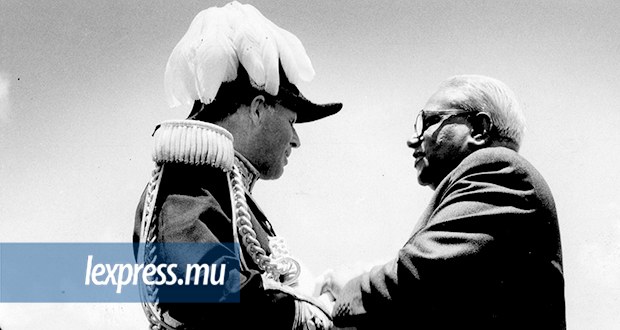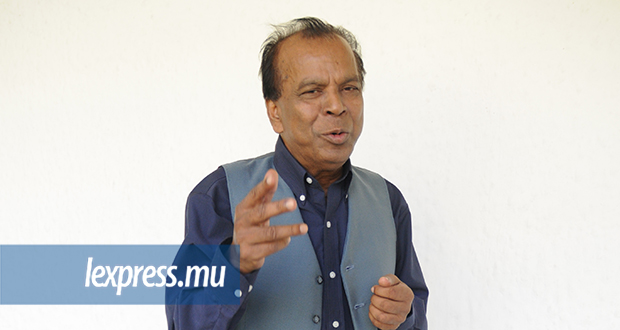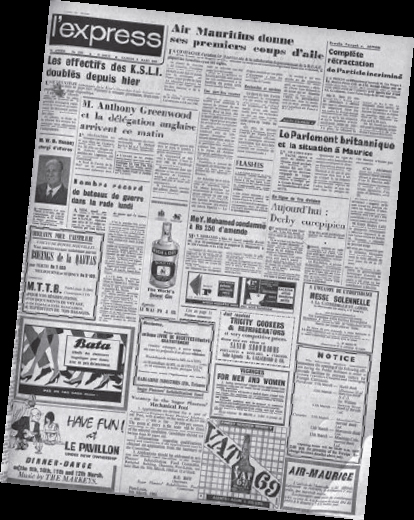Publicité
#50ansMoris: against the odds
Par
Partager cet article
#50ansMoris: against the odds

12 March is now universally celebrated across the country as our Independence Day. But few are aware of just how the actual independence ceremony in 1968 was pulled off against all the odds and the actual drama taking place behind the scenes.
On 9 March 1968, Anthony Greenwood, the then-minister of housing for Britain touched down in Mauritius to attend the independence ceremony in Mauritius scheduled for 12 March in Champ-de-Mars. Originally, it was Princess Alexandra and her husband, Angus Ogilvie who were scheduled to represent the British government in the official handover of power. However, the ceremony was taking place against the backdrop of rioting on the eve of independence mainly centred around Port Louis, that had led to 26 deaths and 400 arrests, forcing the British to hurriedly bring in a company of the King’s Shropshire Light Infantry and some helicopters from Malaysia and a second such company of British troops on 8 March. In the context of such turmoil, the British government was split on whether or not to let Princess Alexandra come to Mauritius. Eventually, they decided to send Greenwood – who as Secretary of State for the colonies was also involved in talks leading up to Mauritian independence – instead. The Commonwealth Relations Office explained the decision to switch from Alexandra to Greenwood as a way to prevent Princess Alexandra and the Mauritian Prime Minister (Sir Seewoosagur Ramgoolam) from embarrassment in the event that protests should break out at the ceremony itself.
The British government had a point: in 1968, the prospect of independence was far from universally accepted. It had in effect been finally decided in the 1967 elections when the Independence Party – a bloc made up of the Labour Party, led by Seewoosagur Ramgoolam, the Muslim Action Committee and the Independent Forward Bloc won 43 seats against 27 won by their opponent, the PMSD. It looked decisive on paper and in the legislative assembly, but in terms of votes, the PMSD had claimed 44 percent. It was this split that spooked the British and made them wary of further trouble at the independence ceremony.
Regardless of the justifications to send Anthony Greenwood, it was not seen favourably by the Mauritian side. To the contrary, it was interpreted as a lack of confidence in its ability to pull off the ceremony. “Rumour had it” wrote Annabelle Rankin, an Australian diplomat attending the ceremony in a report to the Australian Prime Minister, “that Sir Seewoosagur has castigated the governor (Sir John Shaw Rennie –ED.) bitterly enquiring in rhetorical anger what more he wanted, his troops were here, his operatives ran both the police and special branch”. The 1,600-strong police force was under the command of British officers.

It’s easy to see why nerves were frayed: the British were right to be nervous. The odds were stacked against pulling off the ceremony and the Mauritian government scrambled to pull it off. For one thing, it never wanted to hold it in March, it was pressing to put it off for April or May because the Mauritian side did not want to risk a cyclone ripping through its independence day. Cyclone season is from January to March. If it had got its way, and history had gone a little differently, we would be celebrating our independence in April rather than March. In October 1967, however, the British government refused this request and insisted to stick to March. The next problem was that without the high-profile Princess Alexandra showing up, the Mauritian side’s plan of a grand show including children’s rallies, official dinners and industrial visits had fallen flat a bit.
Empty streets
Not only did the Mauritian side have to overcome the practical limitations of being an agrarian colony pulling off a grand show, but also had to contend with stiff local opposition as well. The PMSD led by Gaëtan Duval called for a boycott of the independence ceremony, which he saw as a disaster. That translated into towns such as Rose Hill, Curepipe and Vacoas (then under PMSD control) refusing to contribute a penny or a flag to the ceremony. The streets were empty and shops were shuttered in these towns. That in turn led to some embarrassing compromises. A state banquet to celebrate Sir John Shaw Rennie’s elevation from governor of the British colony to Governor-General of an independent state that was originally planned to be held in the opulent Guild Hall in Curepipe instead had to be transferred to Queen Elizabeth College in Rose Hill. It had the only other hall at the time that could accommodate 400 guests. The iconic flag raising ceremony in Champ-de-Mars was moved from the traditional midnight ceremony to high noon because of security fears. Hence, the famous flag raising photo in the clear day that we are all familiar with today. Also due to the PMSD-called boycott, there were few protocol officials and civil servants to handle things behind the scenes. Strained to the limit, the Mauritian side had to turn to high school boys to conduct liaison duties for the 120 foreign guests who had come from 50 countries and organizations to attend the ceremony.
But the quadri-colour did go up: and 12 March 1968 did herald independence despite the fears and the worries. What is progress? What was a makeshift and rather desperate ceremony in 1968, is now accepted and proudly looked upon by all, even if we ignore the real drama that took place behind the scenes.
Summary

The pages of «l’express» exactly fifty years ago today were obsessively filled with advice and notices about the upcoming Independence Day ceremony. On the front page was news about the British government informing its parliament that it had decided to send another company of troops to Mauritius to address security fears as Mauritian independence neared. A communiqué from the thencommissioner of police had also taken up a lot of room with advice about how people wanting to attend the ceremony in Champ-de-Mars should behave while there, and how to exit in an orderly manner once the ceremony was over. Another large inset within the pages was another communiqué from the island’s administration about which streets will be closed off and for how long to accommodate a planned children’s rally at the racetrack.
Sateeanund Peerthum: “…Celebrating independence in Line Barracks”

Why did Sir Seewoosagur Ramgoolam initially plan to hold the independence ceremony at Line Barracks rather than Champde- Mars?
He initially was in favour of the plan because that was the advice he was given by the then-Police Commissioner, a British official named McCaffery. At the time, the police force was still headed by British officers and they were afraid that in the wake of the riots in Port Louis, holding an independence ceremony in the open air of Champ-de-Mars would only risk making it the setting for more trouble. They advised to hold it at Line Barracks instead where everything could be more controlled. This initially convinced Seewoosagur Ramgoolam. That iconic photo of the union jack being lowered at Champ-de-Mars almost did not happen.
So then what changed his mind?
It was actually Sookdeo Bissoondoyal who related the story in the legislative council in December 1969. According to him, when he got wind of what was being planned for Independence Day, he rushed to the Prime Minister’s Office and met with Seewoosagur Ramgoolam. He criticized Seewoosagur Ramgoolam for allowing himself to be ‘dictated by a police constable’ and argued that it was not appropriate to proclaim the independence of the country under the protection of British guns at Line Barracks, rather than in a public place. This was what brought Seewoosagur Ramgoolam around and he decided to hold it at Champde- Mars after all. Now when Bissoondoyal related this episode in 1969, Ramgoolam was also in the chamber at the time and nobody disagreed that it was the way it happened, so there is little reason to doubt that that is what had happened. Many people don’t realize the importance of these small things, if things had gone just a little bit differently, we would be celebrating independence in Line Barracks instead of Champ-de-Mars.
And how did the British officials react to this rejection of their advice?
At that stage, for all practical purposes, Seewoosagur Ramgoolam was already the Prime Minister (he had already assumed the title of ‘Prime Minister’ since 22 November 1967 –ed.). And so he did not really have to follow what was advised by the police commissioner, nor any other British official. They may not have been happy about that, but really there was little they could do.

Publicité
Publicité
Les plus récents






